
“We also have the opportunity for algae blooms caused by phosphorus in our waters, which leads to eutrophication, or filling in, of our lakes,” says Cody Brown, district conservationist with the U.S. Department of Agriculture Natural Resources Conservation Service in Jasper, Tennessee. While the filling in of lakes is undesirable, Brown says that the algae blooms create dissolved oxygen problems in the water leading to fish kills.
Whether you’re concerned about existing erosion problems on your farm or want to be proactive in their prevention, there are steps you can take to help. Conservationists such as Brown rely on the voluntary participation of landowners who wish to conserve their land and implement a conservation plan that includes the interests of the landowner. These plans, Brown says, can focus on soil erosion, invasive species of plants on the property, or even plant productivity issues.
Soil Testing The first step in developing a plan is often collecting a soil test. “Soil sampling is one of our best tools,” Brown says. “We can’t understand what is going on with the soil until we analyze it.”
Results from the soil test allow problems with soil health to be remedied by adjusting pH levels along with various macro and micronutrients in that order. Examples of macronutrients include calcium, magnesium, nitrogen, phosphorus, potassium and sulfur.
Micronutrients include boron, copper, chlorine, iron, molybdenum, nickel and zinc. Organic matter content, made up of the tissue of plants and animals in decay, or calcium and magnesium ratio, follows.
Pastures & Crops Once these have been addressed through such practices as adding lime, fertilizer, etc. and the soil has been restored to good health, specific management practices are then woven into the conservation plan.
Esta historia es de la edición January - February 2025 de Hobby Farms.
Comience su prueba gratuita de Magzter GOLD de 7 días para acceder a miles de historias premium seleccionadas y a más de 9,000 revistas y periódicos.
Ya eres suscriptor ? Conectar
Esta historia es de la edición January - February 2025 de Hobby Farms.
Comience su prueba gratuita de Magzter GOLD de 7 días para acceder a miles de historias premium seleccionadas y a más de 9,000 revistas y periódicos.
Ya eres suscriptor? Conectar
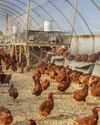
Making Bucks from Clucks
These five reasons might be why you're losing money on your chickens.

Soil Testing
Whether you are new to farming altogether or you are leasing your farmland to a producer who is unfamiliar with the practice, becoming knowledgeable about the acts of soil testing and them applying recommended soil amendments based on soil test results provides tremendous advantages to the soil, plants, and your pocketbook.

Small-But-Mighty Hot Peppers
You don’t have to have a lot of garden space or an especially long growing season to succeed with hot peppers.

French Intensive Gardening
This permaculture system relies on soil improvement, raised beds, close spacing, companion planting, succession planting and crop rotation. Oui, oui!
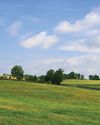
FORAGE FOR FOWL
Consider these three cool-season forages as you plant your pasture with free-range poultry in mind.
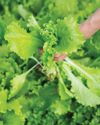
Cut-And-Come Lettuce
Maximize your profits while minimizing time to grow and seed costs with this easy cut-and-come approach to growing lettuce salad mix.
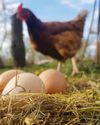
Laying AN EGG
Maintaining correct male-to-female ratios and keeping flocks of younger breeding fowl will help ensure higher fertility and hatching rates.

20 COOP CONSIDERATIONS
Keep these 20 things in mind when designing a home for your chickens.
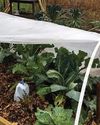
Get LOW in Spring
There comes a time when we all just want to start planting in our gardens again, and a low tunnel provides an earlier-is-better option.
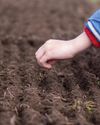
Seed-Starting Soil Temps
Don't miss out on growing time by focusing only on the air temperature.